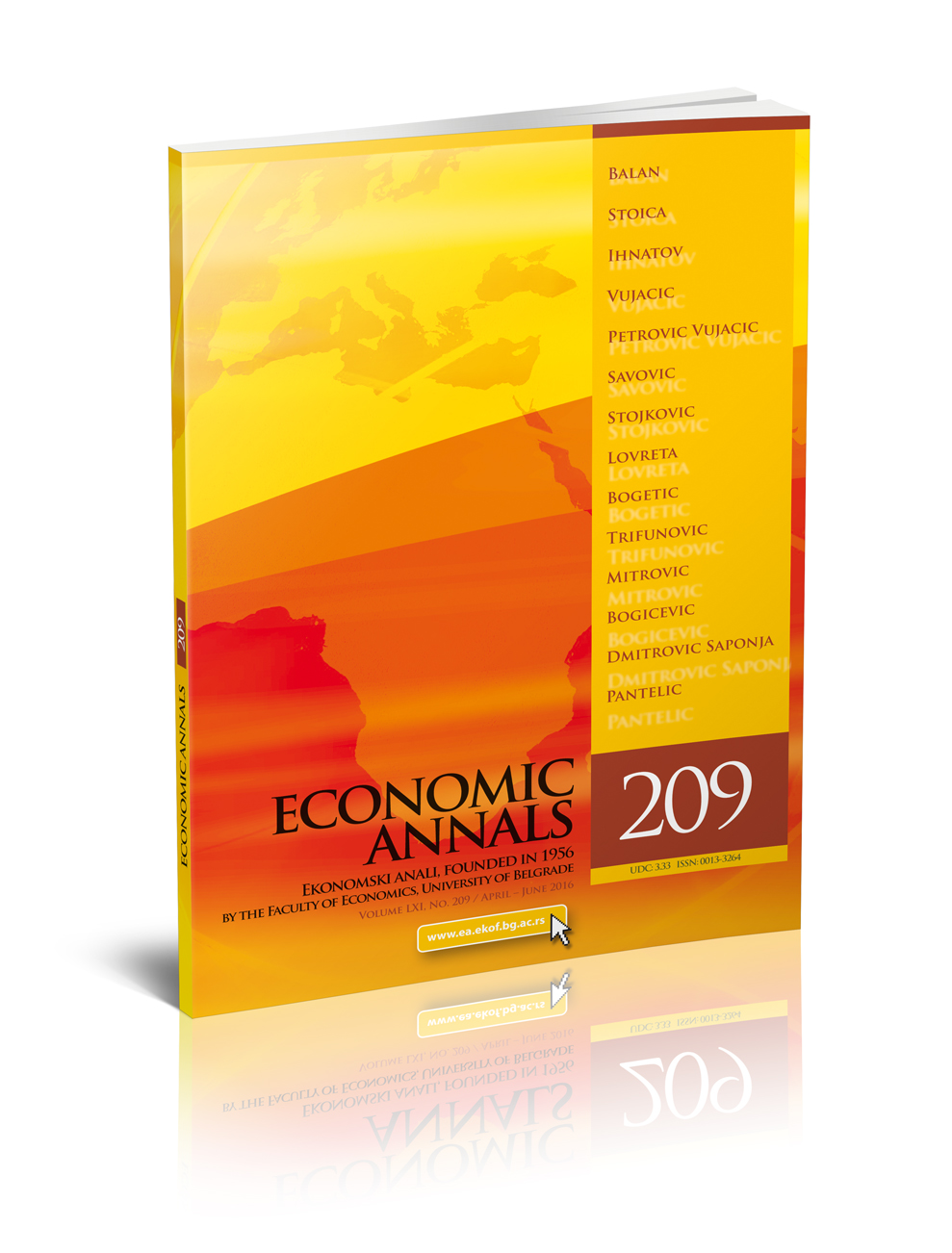EXCHANGE RATE REGIMES AND EXTERNAL FINANCIAL STABILITY
##plugins.themes.bootstrap3.article.main##
##plugins.themes.bootstrap3.article.sidebar##
Ovidiu Stoica
Iulian Ihnatov
Iulian Ihnatov
Abstract
Financial stability within the framework of the global financial crisis has become a common topic for researchers and practitioners. In order to analyse the impact of exchange rate regimes on financial stability we use both the de jure and de facto exchange rate classifications. We apply the model to a 1999–2010 annual data sample for 135 countries and territories, grouped by the level of economic development. Our second focus is the investigation of the effects of the exchange rate regimes in three economic integration areas (member countries of the European Union 27, the Southern Common Market, and the Association of Southeast Asian Nations) on financial stability. Our results generally support the central banks’ concerns that the flexibility of exchange rate regimes should be reduced in order to sustain financial stability; however, the findings are not robust when using alternative regime classifications.
##plugins.themes.bootstrap3.article.details##
Keywords
exchange rate regimes, financial stability, economic integration, country development
JEL Classification
E42, F30, F31
Issue
Section
Articles
How to Cite
Stoica, O., & Ihnatov, I. (2016). EXCHANGE RATE REGIMES AND EXTERNAL FINANCIAL STABILITY. Economic Annals, 61(209), 27-44. https://doi.org/10.2298/EKA1609027S
How to Cite
Stoica, O., & Ihnatov, I. (2016). EXCHANGE RATE REGIMES AND EXTERNAL FINANCIAL STABILITY. Economic Annals, 61(209), 27-44. https://doi.org/10.2298/EKA1609027S

